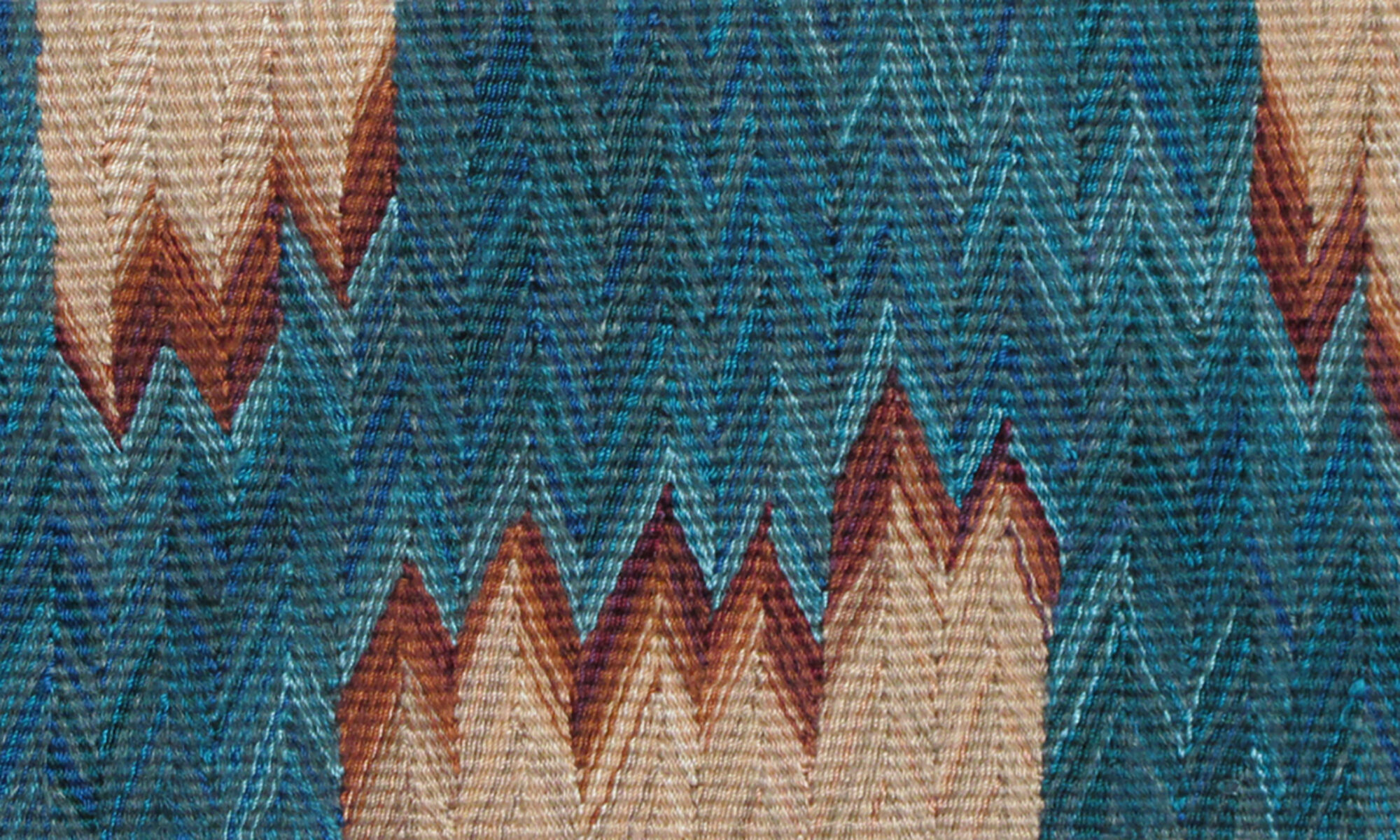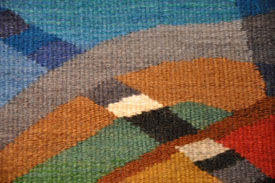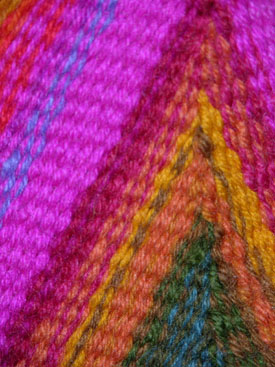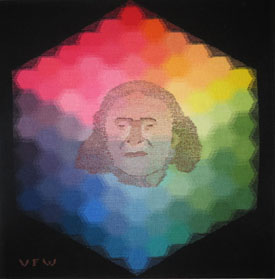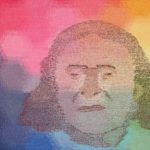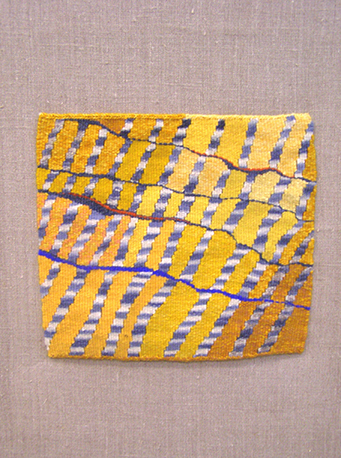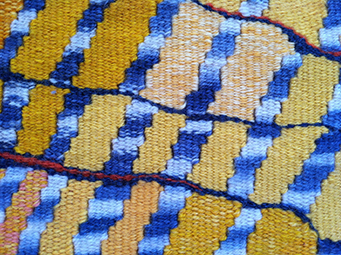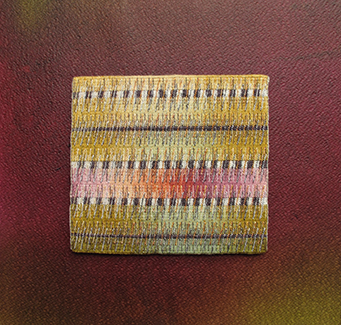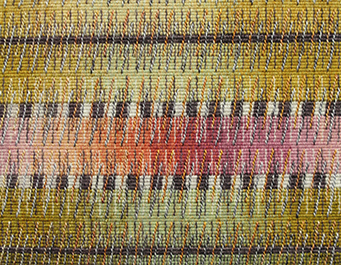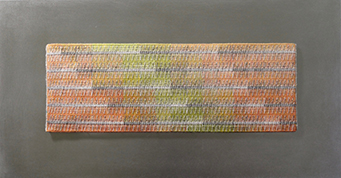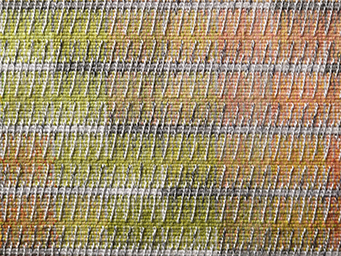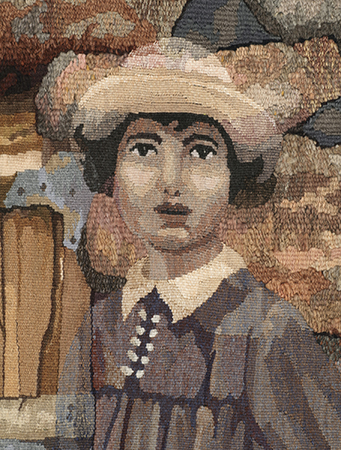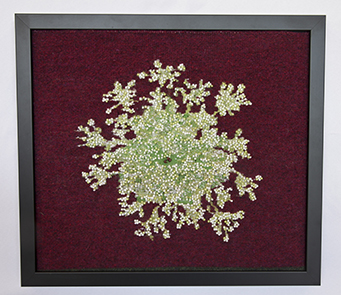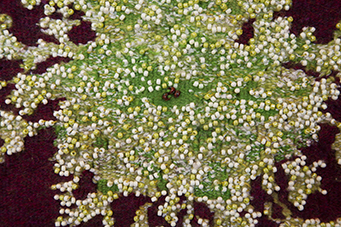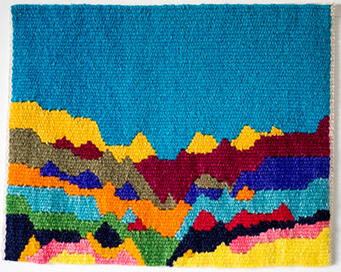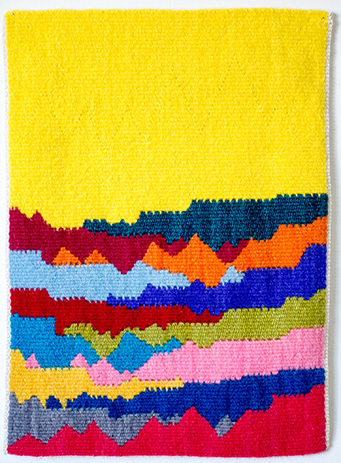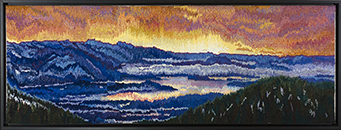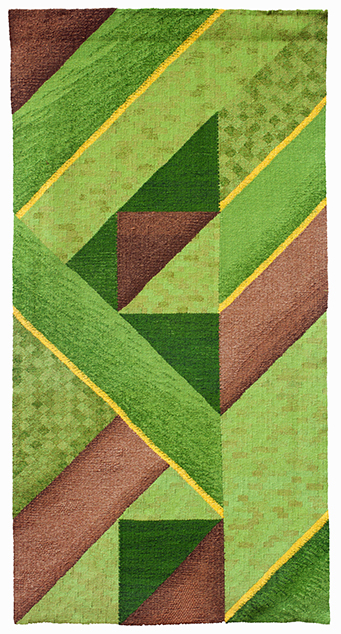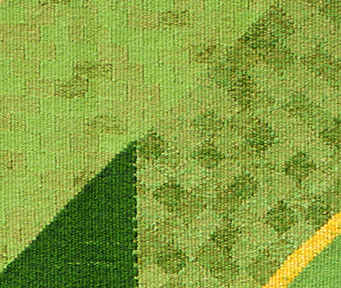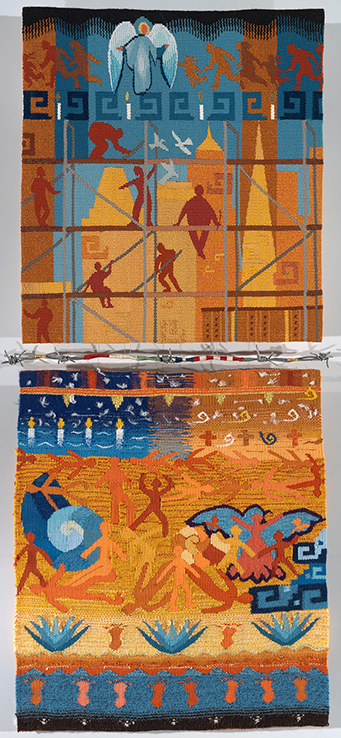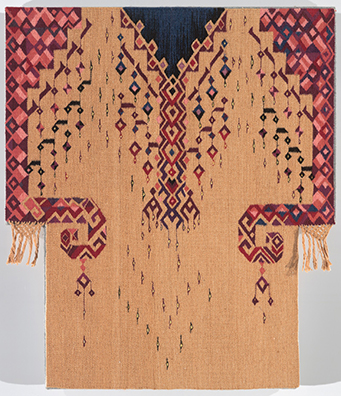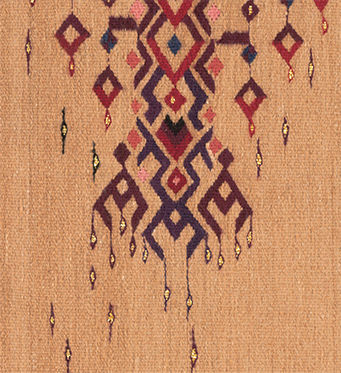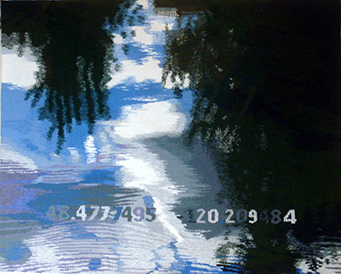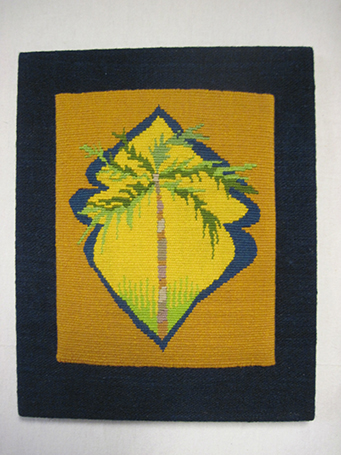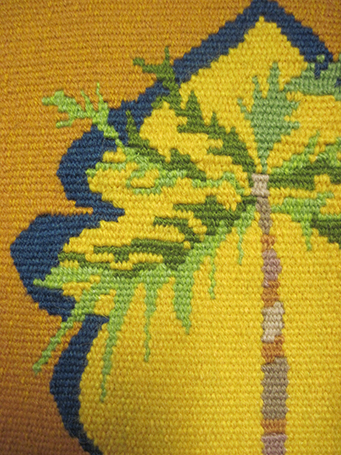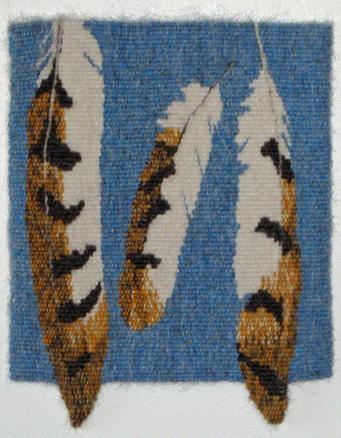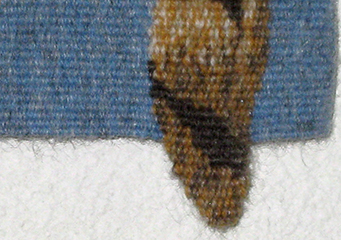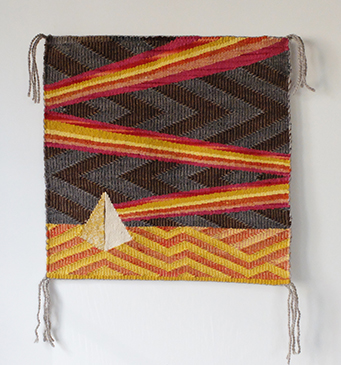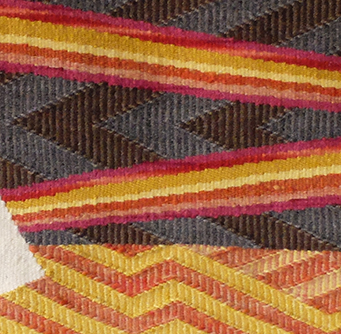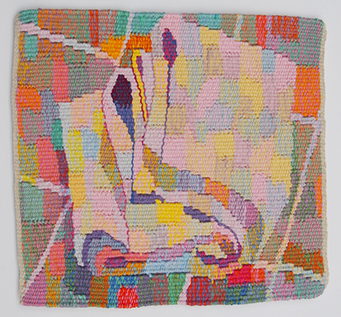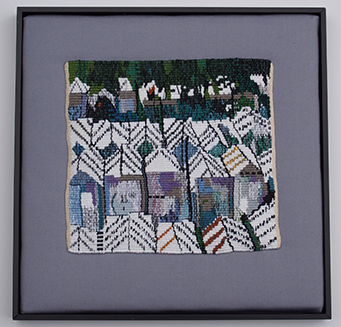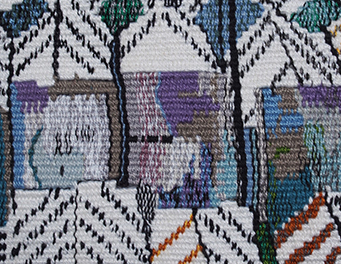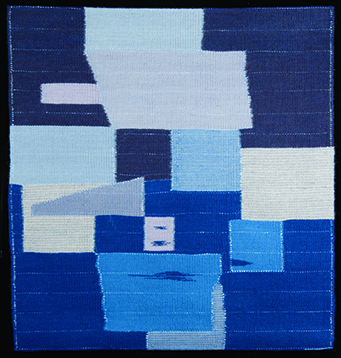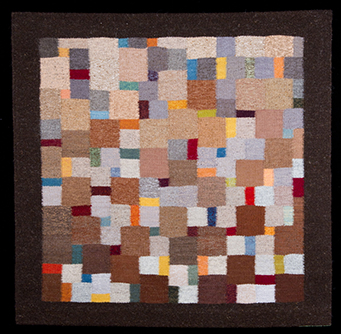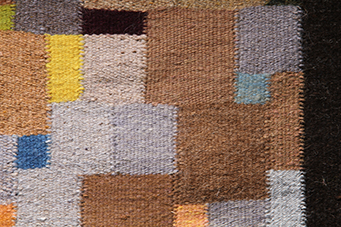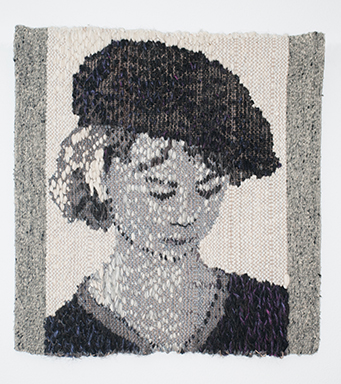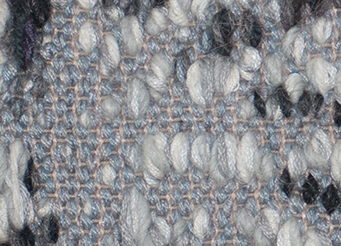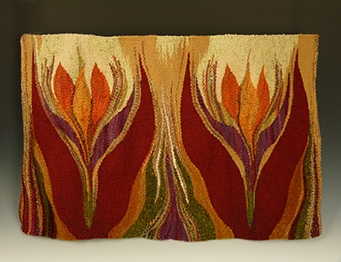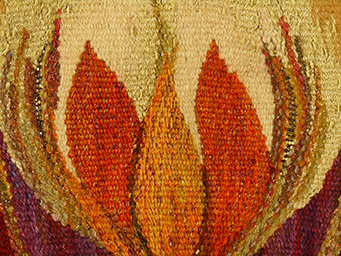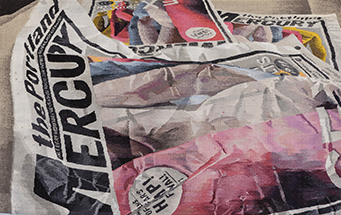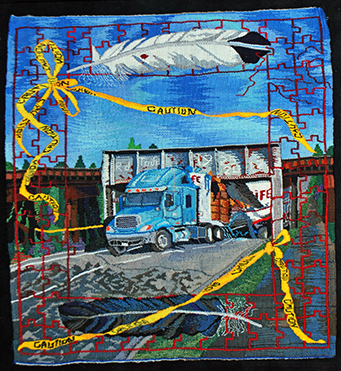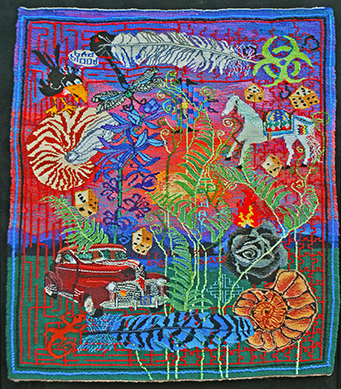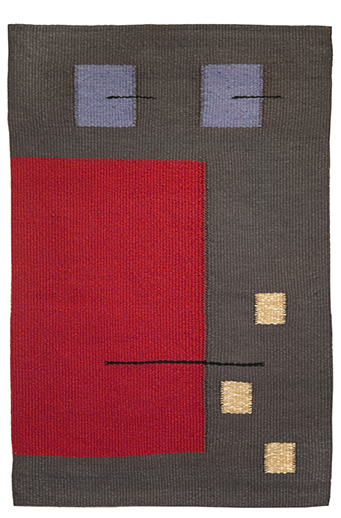Pacific Time Zone
Pacific Time Zone was hosted by The Arts Center in Corvallis, OR (theartscenter.net) from August 18 – September 20, 2016. Any tapestry artist living in the Pacific Time Zone was eligible to enter.
Juror
The exhibition was juried by Layne Goldsmith, professor of Art at the University of Washington since 1983, and an educational entrepreneur specializing in many aspects of textile production. As a studio artist, her work has been exhibited nationally and internationally and is included in both private and public collections. Her research has led to textile projects with artists and artisans from Italy, Japan, Colombia, Guatemala, Chile, Peru, and Nepal. She is the 2011 recipient of the UW Distinguished faculty award for Lifelong Learning. Since 2004 she has designed and produced custom rugs woven in Nepal by Good Weave certified producers and now under her own label, Layne Goldsmith Studio. She also specializes in Natural Dyes and teaches workshops in her studio: Botanica Dyeworks.
Awards
Ms. Goldmsith selected two tapestries for the First and Second Place Awards. The First Place award winner was Shelley Socolofsky. The Second Place award was Kathe Todd-Hooker.
Juror’s Statement
The history of tapestry is rich and varied, replete with narrative, allegory and symbolism. For centuries spinners, dyers and weavers throughout the world have labored to produce innumerable works, one yarn, one color, and one image at a time. The results represent textiles of innovation and beauty. I was compelled by this diversity and legacy as I considered the living edge of that history as seen in the tapestries submitted for exhibition in the Pacific Time Zone.
How can one truly understand and appreciate the tens of thousands of hours spent producing these many works of the hand? Without experience in the craft of weaving, it is difficult to grasp the focus and mastery required to envision and create this art. Each individual tapestry in this exhibit represents perhaps decades of artistic practice beyond the years spent learning and perfecting the technical craft itself. This knowledge and my respect for tapestry was integral to my selection process as was the ability of the work to make a statement; be it formal, technical, narrative, or referential to some particular aspect of its history.
There are always questions that remain unanswered when reviewing images of textiles on a computer screen – removed from the physical objects themselves. Colors may not be accurately conveyed; cropping may render the full work incomplete and perfectly geometric while important details in finishing may have been missed in the photographic image. Another concern for me has to do with cultural authenticity. While it is possible to recognize and honor a tradition that is not one’s own, it is important to use these traditions with respect. Expanding the visual range of tapestry using specific technical information from a given time, place and culture may result in innovative and exciting new work as seen in some of the tapestries in Pacific Time Zone.
For those who know and appreciate the art of tapestry weaving, it is never a question of whether the work was a worthwhile expenditure of time. Here in the 21st Century we have industrial Jacquard looms that are capable to rendering a textile in photographic accuracy. A hand woven tapestry, however, has the ability to convey the many subtle choices made by the artist one yarn at a time. The ways in which a color or texture or light reflective fiber may transform a shape or image is unique to this art form. I looked for all of these things and more as I reviewed this work. I hope you will find these selections an interesting representation of the work being done in the Pacific Time Zone today.
The Tapestries
Deborah Corsini
Marion Cragg
Sharon Crary
Vladimira Fillion-Wackenreuther
Vladimira Fillion-Wackenreuther, “Chief of Seattle,” 35″ x 35,” 2013 . Warp: Linen, Weft: Hand dyed wool and silk.
Alex Friedman
Alex Friedman, “Here Today,” 72″ x 54,” 2013. Wool, cotton, space dyed yarns.
Joyce Hayes
Joyce Hayes, “Etude 7 – The Uprising,” 5″ x 13.75,” 2016. Tapestry with soumak, 20 epi, linen warp, silk weft using natural dyes, rayon for sumac, mounted on brushed steel.
Barbara Heller
Barbara Hitzemann
Laura Kamian McDermott
Laura Kamian McDermott, “Mystery Keyscape, Turquoise,” 10.5″ x 13,” 2013. Hand dyed wool weft, cotton warp.
Patti Kirch

Mary Lane
Jean Pierre Larochette and Rodrigo Sosa
Yael Lurie (Designer) and Luis Lazo (Weaver)
Margo Macdonald
Phoebe McAfee
Sonja Miremont
Audrey Moore
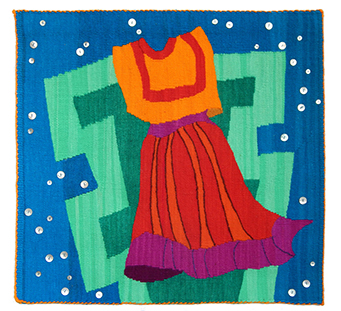
Inge Norgaard
Natalie Novak
Natalie Novak, “The Magician (Coal Mine Mesa),” 22″ x 22,” 2016. Handwoven tapestry on a four selvedge warp, hand spun and commercial wool; natural and aniline dyes.
Natalie Novak, “TV Set (I Built a Temple and Invited the World to See),” 22″ x 35,” 2016. Handwoven tapestry on a four selvedge warp, wool.
Liz Pulos
Liz Pulos, “Just Around the Corner,” 8″ x 8.5,” 2015. Cotton.
Christine Rivers
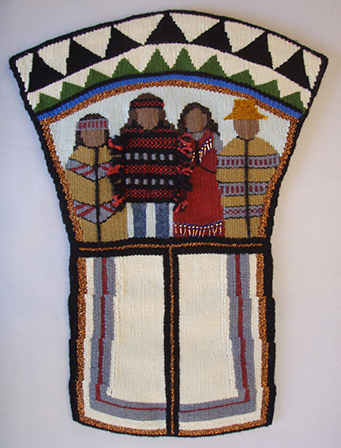
Michael Rohde
Michael Rohde, “Boro,” 33.5″ x 31.5,” 2014. Hand Woven tapestry and embroidery, wool, silk, natural dyes.
Susan Skalak
Rebecca Smith
Shelley Socolofsky
Kathe Todd-Hooker
Kathe Todd-Hooker, “Second Coming Once Again,” 13″ x 12,” 2016. Tapestry, embroidery floss and other fine threads, 22 epi.
Susan Weil
Ama Wertz
